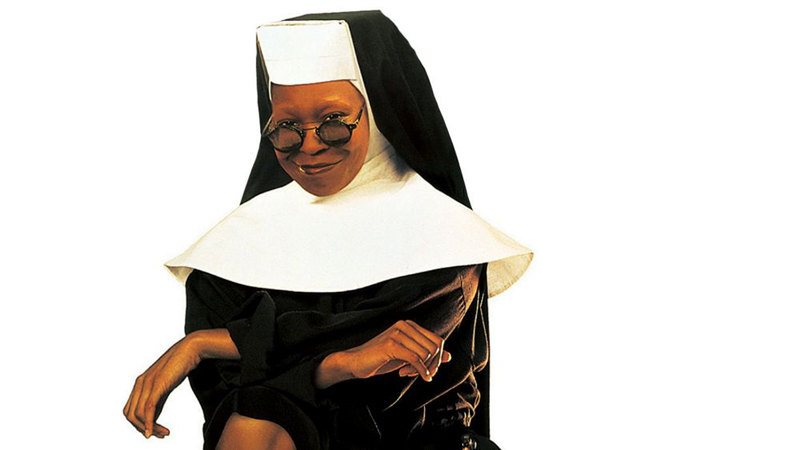“Nobody’s been through what we’ve been through . . . not since the San Francisco earthquake.”
“Everyone in this frickin’ city is on painkillers or booze.”
“Depressed? Angry? Anxious? Aren’t we all.”
“Let Bourbon Street be Bourbon Street.”
And let Tremé be “Treme.” This HBO drama gets its name from a district of New Orleans, and it gets its style, flavor, and atmosphere from the Big Easy as well. If you took a word association test after someone said “New Orleans,” you’d come up with almost all the touchstones in Season 2: Mardi Gras, night life, distinctive Creole/Cajun-influenced food, Trad Jazz and variations that make music a part of everyday life in New Orleans, the aftermath of Hurricane Katrina, resilient people . . . and opportunists. And it’s all here.
“Treme” is an anthology show that jumps from story to story every few minutes. You get musicians, land developers, FEMA agents, cooks and chefs, construction workers, a blogger, artists, journalists, radio jocks, displaced residents, house painters, law enforcement officers, and lowlife criminals. But mostly, you get people who have learned how to make due, to get by—like the horn player who uses the end of a plunger for a mute because, hey, it’s cheaper. And you get plenty of people who celebrate life through music.
If you haven’t seen Season 1, I’ll be honest, it’ll be tougher to connect the dots than if you’d seen the show from Day 1. Then again, the who isn’t as important as the what, and you get a feel for New Orleans and its people either way—which seems to be the whole point of this series. It really brings the city to life, with music an enjoyable constant. When a band plays “Joy to the Maximum,” they’re not kidding. By all accounts, residents are happy with the show and think it honestly portrays a city with a proud tradition, but under duress, still. And it points one heck of an accusing finger at government bureaucracies that would allow modern-day carpetbaggers to profit from others’ miseries.
Melissa Leo plays “Toni” Bernette, a defense attorney who helps people who are getting beaten by a system that doesn’t work. Her daughter, Sofia (India Ennenga), is a jaded blogger. Then there’s Ladonna (Khandi Alexander), who runs a bar, her musician husband, Antoine (Wendell Pierce), and Lt. Colson (David Morse), who seems to understand the appeal of New Orleans and tries to police the city accordingly. There’s also savvy Aunt Mimi (Elizabeth Ashley), who’s all about the city’s musical tradition, and a Janette (Kim Dickens), an aspiring chef who hopes to open her own restaurant. Then there’s a street musician (Michiel Huisman), a classically trained violinist (Lucia Micarelli), a self-interested contractor/developer (Jon Seda) . . . and plenty of significant and insignificant others, among them a young boy who wanders the streets playing his coronet because it bugs his mom to practice indoors. Maybe that’s how all street musicians get started.
The acting is strong, the production values are typical of HBO, and the interweaving storylines should be enough to hook most viewers. Eleven Season 2 episodes are contained on four single-sided discs in foldout cardboard-and-plastic packaging, with episode titles and credits and special features on printed on the cardboard flaps. Total run time is 600 minutes.
“Accentuate the Positive.” Music dominates this episode as Sofia takes over her deceased father’s blog and gets on the government for not doing more.
“Everything I Do Gonh Be Funky.” Lt. Colson tells his men to go easy with the revelers on Bourbon Street. Meanwhile, Janette fights the attitude that New Orleans food falls short.
“On Your Way Down.” LaDonna is the victim of a violent crime, and it hits her and those around her like another Katrina.
“Santa Claus, Do You Ever Get the Blues?” Antoine goes back to teaching to pay the bills, Janette leaves the restaurant thinking she’ll make it in New York, and Davis and Aunt Mimi start a record company.
“Slip Away.” Janette gets a job offer at a posh NYC restaurant, while Sofia is offered an internship in a city councilman’s office.
“Feels Like Rain.” John Hiatt and Henry Butler are the musical guests in an anthology story that really does feel like rain.
“Can I Change My Mind?” Many of the main characters have to deal with severe personal issues.
“What Is New Orleans?” Davis discovers a young rapper, Antoine gets smoked after he tries to pilfer an audience, and LaDonna fights to keep working in her bar.
“That’s What Lovers Do.” All of the principals struggle in some way.
“Do Watcha Wanna.” A New Orleans councilman is arrested for corruption, while Janette decides to come back to the Big Easy.
Video:
HBO has been spotty about sending product, and we received the DVD for “Treme: Season 2.” Judging by what I’ve seen here, it’ll probably look great in HD, because so many of the scenes are low-lit or night shots, and even with standard def you can still pull some detail out of the shadows. “Treme” is presented in 1.78:1 aspect ratio, “enhanced” for 16×9 televisions.
Audio:
The audio is an English DTS Surround that really comes alive when the music starts to play. The bass is just resonant enough, and everything is clear and clean-sounding. Subtitles are in English SDH, French and Spanish.
Extras:
There’s a nice bundle of bonus features included. “The Music of Treme” gives you info on the songs featured this season, while “The Art of Treme” is a Tulane University symposium featuring co-creators David Simon and Eric Overmyer, who are joined by actor Clarke Peters. “Behind Treme: Food for Thought” gives you a rundown on local cuisine and culture, featuring New Orleans chefs John Besh and Alon Shaya. “Behind Treme: Clarke Peters & the Mardi Gras Indians” is a feature on the tradition of Mardi Gras, which goes back long before the notion of flashing for beads. In addition, four audio commentaries are provided featuring Simon, executive producer Nina Kostroff Noble, supervising producer/director Anthony Hemingway, director Brad Anderson, writer George Pelecanos, music supervisor Blak Leyh, and actors Rob Brown, Kim Dickens, Lucia Micarelli, Clarke Peters, and Wendell Pierce. Rounding out the bonus features are audio commentaries for select music performances which feature WBGO’s Josh Jackson and NPR Music’s Patrick Jarenwattananon.
Bottom line:
“Treme” really captures the essence of New Orleans. I wouldn’t say that this show has the same dramatic hook as other HBO series, and maybe part of that is because the storylines shift as quickly and easily as jazz solos in an improv number. “Treme” feels more heavily atmospheric than it does narrative, and there’s enough music in every episode to make it feel like a downriver flipside of “Glee.” And did I mention that the music is terrific?


